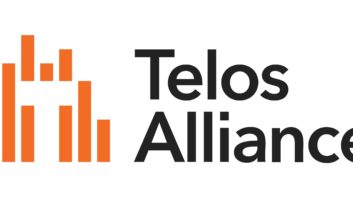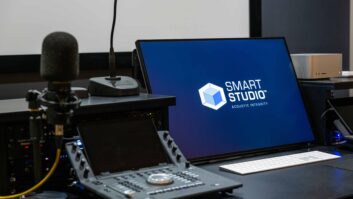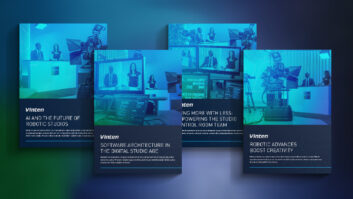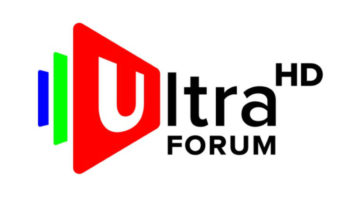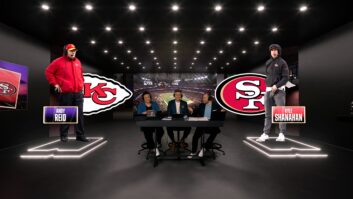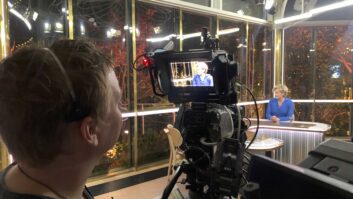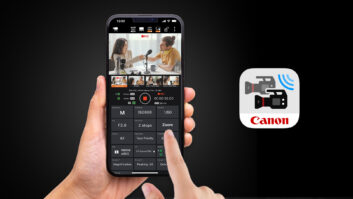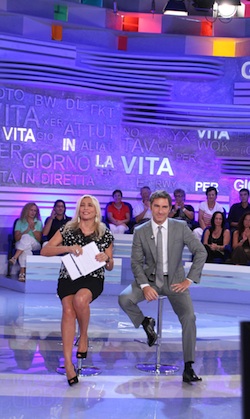
Rai has begun an extensive series of technical upgrades, as Ubaldo Toni, head of TV Production Engineering with the Italian state broadcaster, explains. “These include TG2 (Channel 2’s news department), for which four million euros have been allocated, in addition to the Avid integrated newsroom system, for which funds had already been earmarked, and which should be operational in the early months of 2013.”
The next step (with an investment of slightly less than four million euros) concerns the broadcaster’s thematic channels (Rai 4, Rai Movie, Rai History, etc.), which will switch over to entirely tapeless HD production. There is also a call for tenders for the digitalisation of the Rai’s (18) regional studios and other high-profile projects will follow.
The first stage in this ongoing upgrade was the recent launch of Rai’s first full-HD studio in the broadcaster’s Via Teulada production centre in Rome. The show that inaugurated the studio was La Vita in Diretta (Life Live), a popular daily afternoon talk and news show hosted by Mara Venier and Marco Liorni (pictured), and key members of the technical production team gave an insight on the hardware used.
Broadcast Audio Technician Gianluca D’Ario mans a Stagetech Aurus console and explains, “To be precise, rather than transmitting in 5.1, we generate a 5.1 signal via TC Electronic UnWrap, which we then encode in Dolby E, to be fed to the routing set-up — where the stream is processed for transmission. For Dolby encoding we use a Dolby E Encoder DP 571, DP 57 Multichannel Audio Tool 0 and a DP 563 for Surround, whereas for decoding we used a DP 572.”
Regarding the Soundcraft Vi6 (with 4.0 software) console used to mix in-studio sound, Studio Sound Engineer Emanuele Minghetti observes, “The desk’s main functions are easy to use, very intuitive and comprehensive, including the section for channel resizing and assignment on the work surface, and the masters. The Vistonics ‘knobs on screen’ channel strip interface for control of the auxes and dynamic processors make it also a fast practical desk.”
Virtual patching
The channels available on the local and remote stage boxes can in fact can be routed anywhere thanks to the virtual input/output virtual patching, speeding up the distribution of resources and the creation of the initial project for each job. The patch bay and tie lines are complete with GPIO control.
Minghetti continues, “The monitor and talkback section is really comprehensive, with delay facilities to align monitoring at the console with the FOH system’s output. There is an excellent switchable fader for controlling the wedge monitors at the disposal of guest singers, and the matrix and VCA controls are also easy to use and effective. In short, it is comfortable, rapid and sufficiently practical to use, as well as being reasonably priced.”
In-studio sound reinforcement consists of 10 flown Ohm BR-8 160° loudspeaker enclosures covering the studio audience and powered with RCF 400 amplifiers, plus an Ohm BR-6 enclosure on either side of the LED wall. Five QSC ISIS 122M floor installed speakers powered with a QSC 1500 amplifier are divided into two zones – one for each of the show’s hosts — and four QSC CSM low-profile wedge monitors are on hand for musical guests.
Although saying he would have appreciated ‘dynamic’ contour control facilities for smoothing complexions or giving them more detail, regarding the six Hitachi SK-HD1000 (R2) multi-standard, multi-format cameras, Video Technician Giuseppe Gentile says, “I definitely appreciate the reliability through time of these cameras’ colorimetric-setting values.”
Switching
Regarding the studio’s Grass Valley Kayak DH, video mixer technician Antonio DeBellis says, “The switcher is reliable and really complete. The two BLT SMS 220 HD video servers are reliable and easy to use for editing images in realtime, and forming sequences. Another feature is the speed with which clips can be recalled and the possibility of passing from one clip to another even inline, with the ‘set flag’. Our three Sony XDCAMs are very stable and reliable for the recording and playback of high quality images.”
On the LED-based lighting, Director of Photography Antonio Mansi adds, “The 15 DTS Delta 7 RGB LEDs are bright energy-efficient fixtures that ensure flexible use and low maintenance costs. Their rectangular light front enables them to be used to illuminate large areas of the set evenly, and their RGB technology ensures continuous colour-changing facilities.
“We also use 18 Evolight LED fixtures: twelve are Colours12 RGB SV 12-LED bars and can be installed in sets where space is at a premium, whereas the six Colours54 RGB are 18-LED colourchangers and can be used for coloured beams or, as on this show, for effective backlighting in areas in which lamp replacement would be impossible.”
Head Electrician Valerio Santella adds, “We also have a series of Clay Paky automated fixtures — 14 Clay Paky Alpha Wash 575, which are used to enrich areas of the set, mainly the floor, and 14 Clay Paky Alpha spot 575s, used for musical events and other programmes hosted in the same studio. The studio’s two lighting operators helm a pair of Compulite control consoles.”
Filippo Langarelli, Rai official responsible for the audio and video aspects of the broadcaster’s television studios in its Rome production centre, concludes, “The studio is also equipped with two Hantarex PD42 VW seamless plasma walls (3×3 and 4×3) and a pair of 3×3 LED walls with Nec Multisync X461UN displays.
“At national level the very first full-HD studio was very probably TV3 in Naples, but we began transmitting early this year in full-HD with the first HD studio in our historical Via Teulada production centre in Rome (launched in 1957).”
The new studio definitely got off to a very good start, with the La Vita in Diretta winning a ‘TV Oscar’ in Italy and chalking up an audience share varying between 21.82% and 24.92% (2.5 to 2.6 million viewers).
By Mike Clark
